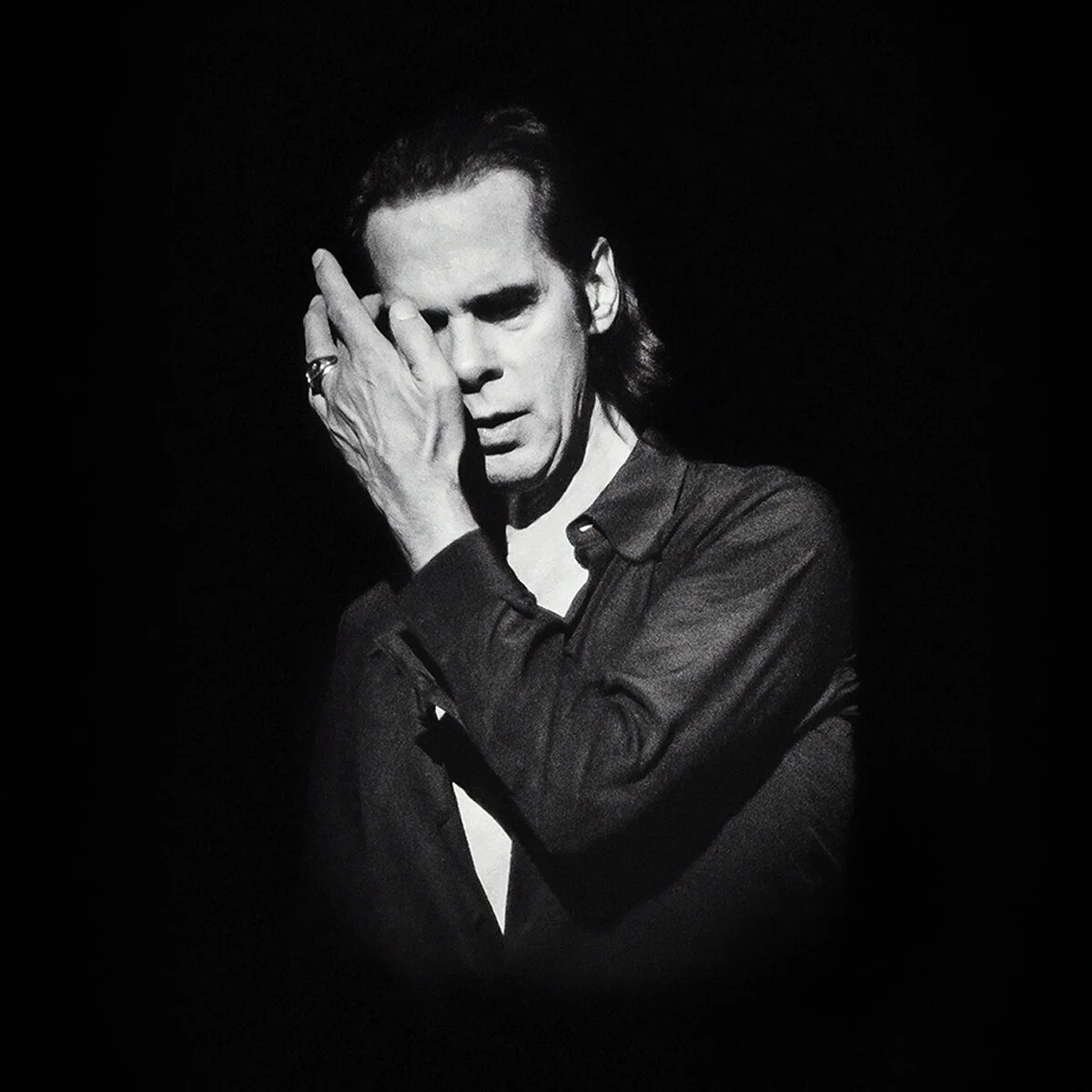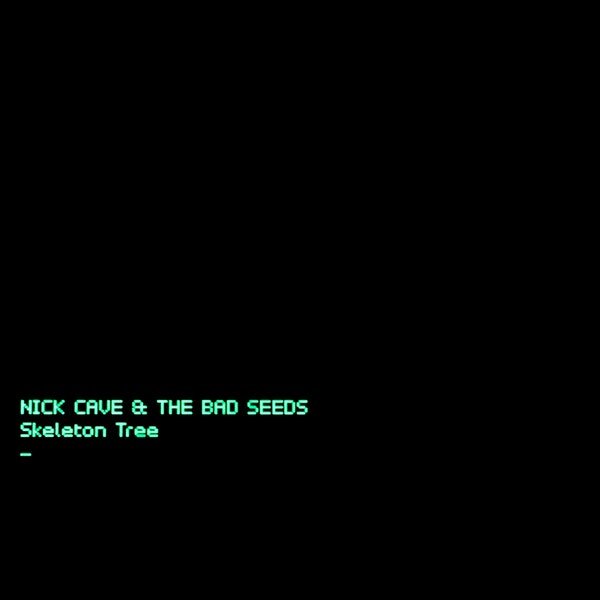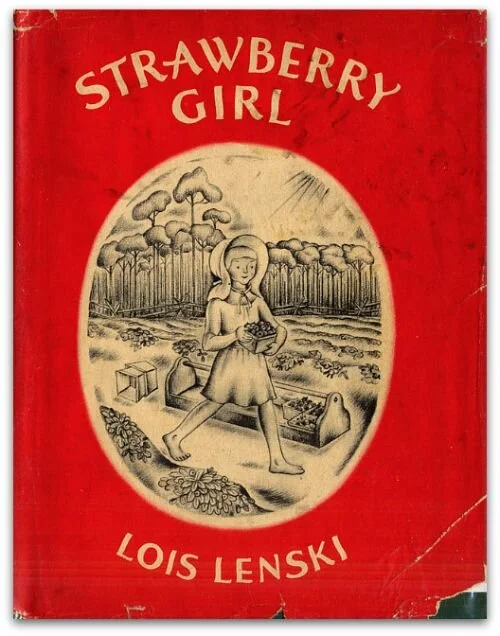Nick Cave Albums Ranked
20. From Her to Eternity (1984)
Nick Cave’s recording career started off with The Birthday Party, but From Her to Eternity is where he stepped out front and claimed his spotlight. Er, claimed his spot; there’s really no light on From Her to Eternity. Outside of the dramatic title track, there’s barely any sign of the band The Bad Seeds would evolve into—the album sounds a lot closer to what Swans and Sonic Youth were doing around that time than anything else Cave would go on to make. I’m not sure what folks made of it at the time, but with the benefit of hindsight, From Her sounds like a not-particularly pleasant evening at an art school dropout’s cabaret performance. Spooky stuff.
19. Nocturama (2003)
There’s a great Red Hand Files article about Nocturama where Nick Cave addresses why most people hate Nocturama, and it’s worth reading. Alas, Nocturama the album isn’t nearly as entertaining. Most of it sounds like a cloying, boring version of No More Shall We Part, except for the songs that sounds like a cloying, boring version of Dig! Lazarus, Dig! Pass.
18. Kicking Against the Pricks (1986)
After two albums of what amounted to more noise than music, Cave decided to lead his band through an album of covers. Unsurprisingly, it’s more tuneful than either of the band’s previous outings; even more unsurprising, it’s willfully difficult. Most of Pricks really just sounds like the band taking the piss out of each song they come across—they cover Tom Jones (“Sleeping Annaleah”) and The Alabama Singers (“Jesus Met the Woman at the Well”)—but they occasionally land on something special (“The Singer”). The one true knockout here is “The Carnival is Over”, probably the first Bad Seeds recording that’s truly moving.
17. Your Funeral…My Trial (1986)
Singing? Organs? Ballads?! Something shifted for The Bad Seeds around the time of Your Funeral…My Trial, and they finally started to sound like a band playing instruments instead of breaking instruments. Cave wasn’t totally out of his creepy theatrical phase yet—“The Carny” is an eight-minute spoken word piece over a nauseating carnival oompah—but the title track and “Stranger Than Kindness” show how much more effective the band had become at channeling their trademark brand of darkness into actual tunes. It’s still not an easy listen by any stretch, but it’s a huge leap toward accessibility that would pay off on following albums.
16. The Good Son (1990)
The Good Son has two TKO stunners. The title track is a sweeping retelling of the biblical parable of the prodigal son, swelling and sweet and one of the best sermons Cave has ever delivered. The other is “The Weeping Song”, an apocalyptic singalong duet with guitarist Blixa Bargeld about some unseen terror. The rest of this uncharacteristically laid-back album is less memorable, especially in the context of its immediate predecessor and successor.
15. The Firstborn is Dead (1985)
Thunder cracks before the band kicks into “Tupelo”, setting an appropriately late-night vibe before Nick starts barking over Barry Adamson’s hiccuping bass. What’s most striking listening to The Firstborn is Dead today is how much younger Cave sounds—his delivery may have not changed much for the next 20+ years, but that voice sure did. His youthful growl makes Firstborn feel by turns charming and put-on, but when it works (like on the hysterical swamp stomper “Black Crow King”), it works. I’ve never been nearly as much a fan of early Cave as his later material, but this no-wave adjacent album is a fascinating look at the band figuring out where to push their sound.
14. Tender Prey (1988)
“The Mercy Seat” is Nick Cave’s best song, right? It’s a song about the electric chair that sounds like an electric chair, all dizzying screeches and breathless rambling that ends with an explosive, searing hurricane of noise. Even in unplugged form, it’s a knockout, but as the opener for Tender Prey, it’s unsurpassable. The rest of the album features some occasional thrilling moments (“City of Refuge”) and sets the template for most of The Bad Seeds’ 90s output, but its production is rooted squarely in the 80s. I know a lot of fans consider this one of the band’s best, but to my ears, it’s more of a seminal work than a masterpiece.
13. No More Shall We Part (2001)
One of the shittiest (and laziest) maxims about musicians who get sober is that it dries up their creative well and makes their music boring. Around the release of 2001’s No More Shall We Part, a lot was made of A) this being the first album Cave released after getting sober, and B) the album being quiet and dull. In retrospect, the two hardly seem to have a causal relationship—The Bad Seeds had already taken a soft and stately turn with prior album The Boatman’s Call that would (sorta) continue on through Nocturama. It also doesn’t capture the specific flavor of quiet the band conjures here. Unlike Boatman’s straightforward piano balladry, No More skews closer to folk, with Warren Ellis’s violin playing an especially important role in setting a pastoral mood. The highlights come early, with both the title track and “Hallelujah” being particularly of note, but there’s a sameness to many of the songs that keeps this one from standing out amongst such a stacked catalog.
12. Let Love In (1994)
Let Love In is a wild-eyed kaleidoscope of an album, easily the most ambitious Bad Seeds album to that point and close to the best. How do you even classify a song like “Red Right Hand”, the song that put Nick Cave on the cultural map and is mostly made of out chimes and lounge organ? It’s sounds like something that would play in Hell’s poshest hotel, which I mean as the highest compliment. The rest of the album is more than solid, taking the musical cues from Henry’s Dream and stretching them out to their breaking points, be it the sweet and scary “Nobody’s Baby Now” or the white-knuckled barks of “Jangling Jack”. But Let Love In also sounds like a transitional album, with some of the cuts nodding toward where the band would take their sound on Murder Ballads. There’s nothing to complain about on Let Love In, it just doesn’t hit quite the highs of the band’s best work.
11. Grinderman (2007)
Grinderman, technically a Bad Seeds side project, is where the Nick Cave has released his weirdest impulses, and the first Grinderman album might just be the strangest in Cave & Co.’s cannon. “Get It On” and the hilarious “No Pussy Blues” light things off in the most straightforward rock-and-roll that Cave had been associated with in…well, maybe ever, but things take a zigzag route from there that’s a pretty even split of zany highs and head-scratchers you can’t play with company around. Perhaps most striking is the bizarrely touching “Man In the Moon” that comes late in the album, a minimalistic funeral dirge that somehow found its way onto the same album as “Love Bomb”. Never boring but not quite cohesive, Grinderman is a playful shock that foreshadowed even better things to come.
10. Ghosteen (2019)
There’s a seven-track version of this album that would top the list. The opening stretch of tracks from “Spinning Song” to “Sun Forest” is unbeatable is Cave’s whole discography, just one breathtaking stunner after another. And unlike Skeleton Tree, which sounded like an emotional house of horrors, Ghosteen treads a quieter path, using serene lullabies to address the same traumatic loss of his son. How serene? Since its release, I’ve listened to those first five songs just about every night as I fall asleep. Unfortunately, Ghosteen doesn’t sustain its spell for the whole double-disc runtime—the middle section of the album (in particular, the 12-minute “Ghosteen”) is pretty weak in comparison to the beginning and ending, featuring disappointingly simple and cliched lyrics that stick out sorely next to the pastoral beauty that came before.
9. Abattoir Blues/The Lyre of Orpheus (2004)
After a few albums that could reasonably be described as “sleepy”, Abattoir Blues begins loud and startling enough to zap listeners like a jolt of lightning. Cave demands “get ready for love!” over crashing drums, screaming guitars, and a full-on gospel choir, then basically spends the next hour-and-a-half of this marvelous double album daring anyone to turn away. It’s as much of a stylistic flip as between Murder Ballads and The Boatman’s Call, and nearly as effective in using that surprise to its advantage. The Bone Machine-esque creep of “Lyre of Orpheus” and chirping “Breathless” push The Lyre of Orpheus even above the heights of Abattoir Blues, but there’s really not much to complain about on either disc. From here on out, Nick Cave has never really stumbled.
8. Henry’s Dream (1992)
Nick and the band were famously displeased with the way Henry’s Dream turned out, blaming Neil Young producer David Briggs for smoothing out the rougher edges they’d intended for the songs. For my money though, Henry’s Dream is near-perfect. “Papa Won’t Leave You, Henry” is one of the best songs Cave has ever written, with a snarling, cinematic arrangement elevating the breathtaking lyrics. The hyper-literate songwriting and guitar-driven balladry foreshadow some of the band’s later work on Dig! Lazarus, Dig!, while the relatively straightforward “Straight To You” is the best anthem the band ever recorded. An underrated gem.
7. Murder Ballads (1996)
Welp, you can’t knock this one for false advertising. Murder Ballads is pretty much what it says on the tin—ten songs with more blood and “fucks” than you can shake a stick at. Though “Stagger Lee” is where my brain always goes when thinking about this album—a song that legit sounds like The Bad Seeds trying their hand at bluesy gangsta rap—the overall palette is much more in line with the textures of Henry’s Dream, weaving chugging rockers (“The Curse of Millhaven”) in with piano-driven ballads (“Where the Wild Roses Grow”). Best of all is Cave’s gorgeous, haunting duet with then-girlfriend PJ Harvey, “Henry Lee”. A deliciously gory funhouse of an album, Murder Ballads is an embarrassment of riches that pushed The Bad Seeds’ 90s sound to its extreme end.
6. Carnage (2021)
Cave’s latest is credited solely to Nick Cave & Warren Ellis, but you’d never guess it was made by a different crew than the band who’d cooked up Skeleton Tree and Ghosteen. If anything, it sounds even more like a full band effort than those two albums, and between the crashing drums of “White Elephant” and the choirs that adorn half the tracks, it makes you wonder what the hell the rest of the Bad Seeds have been doing the past decade. It’s also the most musically varied project to come from Cave since at least Push the Sky Away, if not all the way back to Lazarus, and this is what truly sets it near the top of the pack. Opener “Hand of God” starts with a hilarious feint that quickly careens into pure Lynchian territory, and the album keeps zagging from there. Within that context, Carnage’s best tracks are actually the ones that build on the sounds from Ghosteen: the melodic, heartbreaking title track, and the weather-worn whimsy of “Balcony Man”. Both of them showcase Cave in top form as a lyricist and crooner, and Ellis’s elegant string arrangements have never sounded better.
5. The Boatman’s Call (1997)
When The Boatman’s Call came out, it represented a complete 180 for Nick Cave. If Murder Ballads sounded like a hurricane of blackness bowling over houses and stripping paint off the walls, The Boatman’s Call is someone walking through the aftermath, surveying the damage and trying to understand where to go. As this is Nick Cave, the answer is appropriately bleak: “Where Do We Go Now But Nowhere?” This is Cave’s most direct album, the one with the fewest metaphors and the most direct emoting. What other Bad Seeds album could you see being played at a wedding (“Into My Arms”) or in Shrek (“People Ain’t No Good”)? Best of all is “(Are You) the One That I’ve Been Waiting For”, a heartbreaker that’s soundtracked every breakup I’ve ever had. It’s an album that shows how effective Cave is when writing straightforward songs from the heart, understandably considered his masterpiece by most.
4. Dig, Lazarus, Dig! (2008)
Dig, Lazarus, Dig! is sandwiched right in between the two Grinderman albums, and it’s the closest the Bad Seeds ever came to sounding like their sneering sister band. But whereas Grinderman’s work tended toward the leacherous and smarmy, Lazarus shifts the focus toward Cave’s typical lyrical fare: the Bible, literature, and history. It’s a winning combination, with standouts “We Call Upon the Author” and “Moonland” harnessing a kinetic energy that’s distinct amongst the Bad Seeds’ albums. Cave’s lyrics here are dense, almost to the point of tedium, but his delivery is stupendous and contagious, at times sounding closer to rap or performance art than rock vocals. It truly elevates the songs to new theatrical heights and makes them some of the most accessible and upbeat work he’s ever done. Lazarus is a funhouse of a record, one of the most musically diverse in Cave’s discography, and a fabulous entry point for new fans.
3. Skeleton Tree (2016)
The mid-2010s saw a string of brilliant albums centered around death—Sufjan’s pining Carrie & Lowell, Sun Kil Moon’s ultimately life-affirming Benji, Mount Eerie’s clear-eyed A Crow Looked at Me. All of these albums take different approaches to their subject material, but none is as pitch black as Skeleton Tree, recorded in the wake of Arthur Cave’s death. It’s a harrowing record, by turns beautiful and terrifying, and marked a radical shift in Cave’s songwriting and sound. “Girl in Amber” and “Magneto” are, for my money, the two best songs the man has ever put his name to, impressionistic synth dirges that feel all-encompassing in their grief. The Bad Seeds have always been a mutable band, but the work they turn in here is particularly remarkable—when Warren Ellis’s violin skitters at the end of “Girl in Amber”, it’ll send chills up your spine.
2. Grinderman 2 (2010)
In a rare case of the sequel being better than the original, Grinderman perfected their sleazy side project on their second outing. It’s louder. It’s filthier. And most importantly, it’s funnier. When Cave complains that his side piece’s children are “the ugliest fuckin’ kids I’ve ever seen”, it’s enough to make you wonder why he’d ever play it straight. Musically, it’s a more varied project than Grinderman, from the white-knuckle noise blasts of “Evil” to the static loops of “What I Know”, a bizarre foreshadowing of the texture-oriented albums the Bad Seeds would create later in the 2010s. Grinderman 2 starts full throttle and never lets down, a snarling wink of an album with some serious guts.
1. Push the Sky Away (2013)
Thirty years and fifteen albums in, The Bad Seeds crafted their masterpiece. Push the Sky Away is an ethereal, slippery album, full of ghosts and built around more loops than grooves. It’s also the first Bad Seeds record where violinist Warren Ellis took center stage as the lead musician, a role he’d occupy up to at least Carnage. But the band hadn’t totally gone off the deep end (or disappeared) like they would on subsequent releases—songs like the rapturous “Jubilee Street” or harrowing “Higgs Boson Blues” could have theoretically fit in on any Bad Seeds record post-Nocturama. What sets Push the Sky Away above all the rest is the mood, a foggy, just-out-of-reach pulse that’s creeping without being creepy, unsettled without being unsettling. Not a single moment is wasted from beginning to end, and the performances are immaculate. There’s no other band who could’ve recorded this album, and the Bad Seeds moved on from this particular strain of blues straight away, as if acknowledging the impossibility of capturing this same lightning in a bottle again. Though supposedly part of a trilogy along with Skeleton Tree and Ghosteen, there’s not another album like Push the Sky Away in Cave’s cannon.























